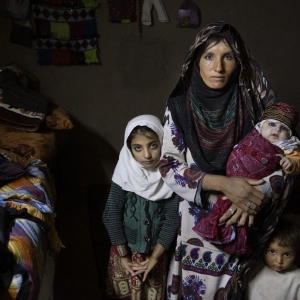Indikatoren in dieser Dimension analysieren, inwieweit Migrantinnen und Migranten hinsichtlich des Zugangs zu grundlegenden sozialen Diensten wie Gesundheit, Bildung und soziale Sicherheit den gleichen Status wie Bürgerinnen und Bürger haben. Es beschreibt die Rechte von Migrantinnen und Migranten auf Familienzusammenführung, Arbeit, Aufenthalt und Staatsbürgerschaft. Die Ratifizierung der wichtigsten internationalen Konventionen fällt ebenfalls in diesen Bereich.main.
Indikatoren in dieser Dimension bewerten die institutionellen, rechtlichen und regulatorischen Rahmenbedingungen der Länder im Zusammenhang mit Migrationspolitik. Dimension 2 beinhaltet auch das Vorhandensein von nationalen Migrationsstrategien, die mit Entwicklungspolitik und -ansätzen im Einklang stehen, sowie die institutionelle Transparenz und Kohärenz in Bezug auf Migrationsmanagement. In diesem Bereich wird auch untersucht, inwieweit Regierungen Migrationsdaten erheben und verwenden.
Diese Dimension konzentriert sich auf die Bemühungen von Ländern, in migrationsbezogenen Fragen mit anderen Staaten und einschlägigen nichstaatlichen Akteuren, einschließlich Organisationen der Zivilgesellschaft und des Privatsektors, zusammenzuarbeiten. Kooperation kann zu Verbesserungen der Regierungsführung führen, indem Standards angeglichen und angehoben, der Dialog intensiviert und Strukturen der Bewältigung von Herausforderungen geschaffen werden.
Diese Dimension umfasst Indikatoren für die Politik der Länder zur Steuerung des sozioökonomischen Wohlergehens von Migrantinnen und Migranten, z.B. die Anerkennung der Bildungs- und Berufsqualifikationen von Migrantinnen und Migranten, Bestimmungen zur Regelung der Studentenmigration und das Bestehen bilateraler Arbeitsabkommen zwischen Ländern. Die Indikatoren konzentrieren sich gleichermaßen auf Maßnahmen und Strategien im Zusammenhang mit dem Engagement der Diasporamitglieder und den grenzüberschreitenden Geldtransfers von Migrantinnen und Migranten
Diese Dimension befasst sich mit der Art und dem Grad der Bereitschaft von Ländern, wenn sie mit Mobilitätsdimensionen von Krisen konfrontiert sind, die entweder mit Katastrophen, der Umwelt und/oder Konflikten zusammenhängen. Die Fragen werden verwendet, um die Prozesse für Staatsangehörige und Ausländer sowohl während als auch Katastrophen zu ermitteln, einschließlich der Frage, ob humanitäre Hilfe für Migrantinnen und Migranten genauso verfügbar ist wir für Bürgerinnen und Bürger.
Diese Dimension analysiert den Ansatz der Länder zum Migrationsmanagement bezüglich Grenzkontroll- und Grenzschutzmaßnahmen, Zulassungsvoraussetzungen für Migranten, Vorbereitung und Flexibilität bei erheblichen und unerwarteten Wanderungsbewegungen sowie die Bekämpfung des Menschenhandels und des Menschenschmuggels von Migrantinnen und Migranten. Es werden auch die Bemühungen und Anreize zur Unterstützung der Integration der zurückkehrenden Staatsbürgerinnen und -burger bewertet.
This country Profile describes examples of well-developed areas of the Democratic Republic of Congo’s migration governance structures and areas with potential for further development, as evaluated through the six domains of the Migration Governance Indicators (MGI). These address migrants’ rights, a “whole-of-government” approach, partnerships, socioeconomic well-being of migrants, the mobility dimensions of crises, and safe and orderly migration.
Click the icons on the wheel to explore the key findings.
The Migration Governance Indicators (MGI) initiative is a policy-benchmarking programme led by the International Organization for Migration (IOM) and implemented with research and analysis from the Economist Intelligence Unit. Funding is provided by IOM Member States.
Migration Governance: examples of well-developed areas
- All migrants have access to all Government-funded health services, regardless of their migratory status.
- Migrants, regardless of their status, have equal access as Congolese citizens to both primary education and secondary and vocational education.
- Family reunification is possible for all migrants.
- All migrants holding a work permit have access to social security, notably to antenatal allowances, maternity allowances, family allowances and pensions.
Areas with potential for further development
- Only refugees have the right to access employment on equal terms with Congolese nationals.
- Certain professions are reserved for Congolese nationals, and there are quotas limiting the number of foreign employees in a company.
- There is no specific strategy for addressing hate crimes, violence, xenophobia or discrimination against migrants.
Migration Governance: examples of well-developed areas
- The country has legislation governing immigration.
- The Directorate for Congolese Abroad (Direction des Congolais de l’Étranger) within the Ministry of Foreign Affairs and International Cooperation, is responsible for identifying and keeping a record of Congolese nationals abroad, mobilizing them for the development of the country, and defending their rights and interests.
- The Democratic Republic of the Congo regularly publishes data on migration.
Areas with potential for further development
- There is no interministerial coordination mechanisms for migration issues at the national level, but the various structures and entities regularly collaborate on such issues.
- The Democratic Republic of the Congo has no national strategies on migration set out in a programme document or manifesto.
- The rules and regulations governing migration in the country are not easily accessible online.
Migration Governance: examples of well-developed areas
- The Democratic Republic of the Congo participates in two official regional consultative processes and two interregional consultative forums, such as the Migration Dialogue for Southern Africa and the Migration Dialogue from the Common Market for Eastern and Southern Africa Member States.
- The Democratic Republic of the Congo signed agreements on the joint management of migration with Canada in 2022 and Switzerland in 2013, among others.
- Non-profit associations and civil society are consulted on certain aspects of work relating to Congolese diaspora matters or mobilization.
Areas with potential for further development
- The government collaborates on an ad hoc basis with the private sector and social partners in setting the migration agenda and addressing the associated issues.
- The Democratic Republic of the Congo involves members of the diaspora and expatriate communities in setting the development agenda and implementing its associated policy only on an ad hoc basis.
- The country has not yet implemented the Southern African Development Community’s measures to promote the mobility of the workforce among its member States.
Migration Governance: examples of well-developed areas
- There are different types of visas to attract specific skills.
- The country considers the skills and capacities of migrant workers in its admission decisions.
- The Democratic Republic of the Congo participates is a member of the African and Malagasy Council for Higher Education (Conseil Africain et Malgache pour l’Enseignement Supérieur, CAMES), which has a programme for the recognition and equivalence of qualifications.
- There are mechanisms to protect the rights of Congolese working abroad through its Directorate for Congolese Abroad.
Areas with potential for further development
- The country does not conduct national assessments to monitor the labour market demand for migrants, the national labour supply or the impact of emigration on the domestic labour market.
- The Democratic Republic of the Congo does not collect data on the labour market disaggregated by migratory status or gender.
- There are no specific measures to promote the ethical recruitment of migrant workers, nor are there measures to promote gender equality in the general labour market.
Migration Governance: examples of well-developed areas
- The operational warning system of the 2021 Disaster Response Organizational Plan (Plan d’organisation de secours en cas de catastrophe, ORSEC Plan) contains several provisions for managing the movement of populations during a disaster.
- The country has introduced strategies to address migration caused by environmental degradation and the harmful effects of climate change.
- Communication systems for receiving information about the development of disasters and access to aid, and to allow the public to communicate their needs to the authorities, take into account the specific vulnerabilities to which migrants are exposed.
Areas with potential for further development
- The ORSEC Plan lacks specific measures related to assisting migrants during crisis and post-crisis periods in the country, nor does it take migration issues into account in post-crisis recovery strategies.
- The ORSEC Plan An states that an ad hoc cell-type structure to support disaster victims may be set up to connect affected populations to the services or representatives of relevant entities but does not mention migrants.
- Certain measures are in place to exempt only refugees from immigration procedures.
Migration Governance: examples of well-developed areas
- The Permanent Border Commission (Commission Permanente des Frontières) prepares a quarterly report for the Government on the condition of the borders, informs political and administrative leaders about incomplete boundaries and other irregular routes likely to cause border problems, maintains borders that are already demarcated, and acts as a database for sound border management.
- The country has measures to combat the exploitation of workers, which also apply to migrant workers.
- The Democratic Republic of the Congo has introduced policies and procedures to identify migrants in situations of vulnerability in a timely way and provide them with suitable orientation and protection services.
Areas with potential for further development
- The country has ad hoc training programmes for border personnel.
- Draft legislation on antitrafficking measures has been introduced to Parliament, but it had not yet been voted on as of February 2023.
- There are no specific government programmes or policies aimed at attracting nationals who have migrated from the country or facilitating their return.
2023 Februar




